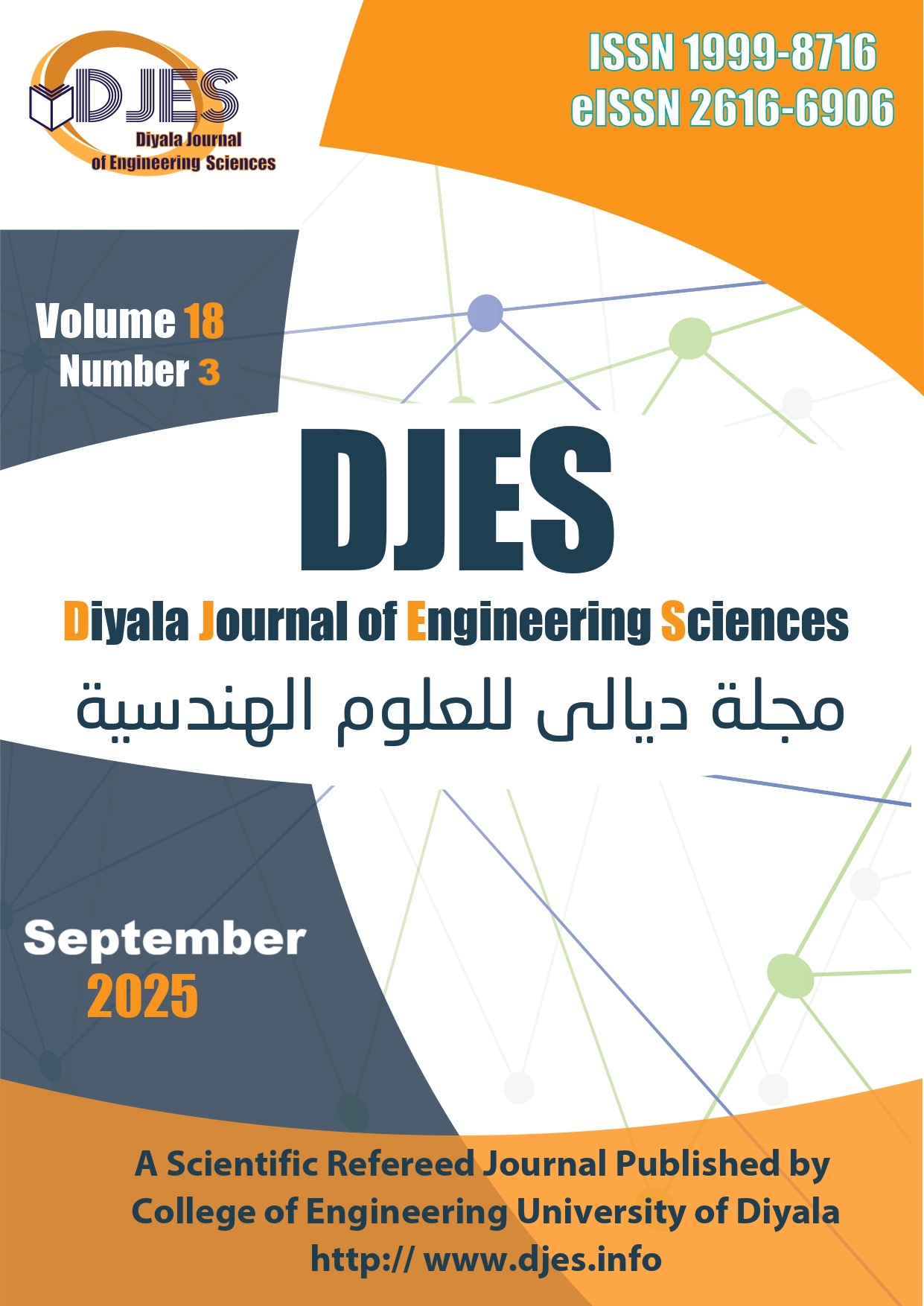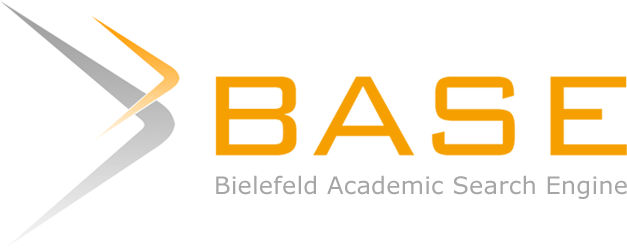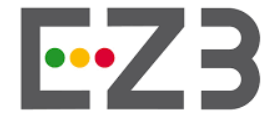Deep Learning-Based Detection, Segmentation, and Quantification of Asphalt Pavement Cracks
DOI:
https://doi.org/10.24237/djes.2025.18305Keywords:
YOLOv10, UNet 3+, Attention gate, Residual unit, Cracks identificationAbstract
The primary factor influencing road performance is pavement deterioration. Pavement cracking, a prevalent form of road deterioration, is a significant challenge in road maintenance. This paper proposes a method utilizing deep convolutional neural network models for precise crack detection, segmentation, and geometric parameter calculation in pavement crack identification. The system operates through three primary stages: Commencement, crack identification employs YOLOv10, a rapid and efficient object detection model. Secondly, crack segmentation employs a modified Unet 3+ variant known as Residual-Attention UNet 3+, which effectively distinguishes crack pixels from the background by utilizing attention mechanisms and residual connections to enhance accuracy. Finally, crack quantification, wherein the system computes the crack's geometric parameters, including width, length, angle, and orientation. We assessed performance using two datasets: SUT-Crack, a publicly accessible dataset, and IRD-Crack, a new real-world dataset compiled by the authors from roads in Diyala, Iraq, with diverse lighting conditions and surface complexities. The suggested technique attained an accuracy of 98.96% on the SUT-Crack dataset. It showed superior performance on the IRD-Crack dataset under actual situations, therefore validating its efficacy and generalization capability. This method offers a pragmatic and computationally efficient instrument for monitoring pavement cracks and can facilitate road repair choices.
Downloads
References
[1] X. Feng et al., “Pavement crack detection and segmentation method based on improved deep learning fusion model,” Math. Probl. Eng., vol. 2020, no. 1, p. 8515213, 2020.
[2] Z. Li, H. Zhang, Z. Li, and Z. Ren, “Residual-attention UNet++: a nested residual-attention U-net for medical image segmentation,” Appl. Sci., vol. 12, no. 14, p. 7149, 2022.
[3] K. Malek, A. Mohammadkhorasani, and F. Moreu, “Methodology to integrate augmented reality and pattern recognition for crack detection,” Comput. Civ. Infrastruct. Eng., vol. 38, no. 8, pp. 1000–1019, 2023.
[4] M.-V. Pham, Y.-S. Ha, and Y.-T. Kim, “Automatic detection and measurement of ground crack propagation using deep learning networks and an image processing technique,” Measurement, vol. 215, p. 112832, 2023.
[5] K. Sarkar, A. Shiuly, and K. G. Dhal, “Revolutionizing concrete analysis: An in-depth survey of AI-powered insights with image-centric approaches on comprehensive quality control, advanced crack detection and concrete property exploration,” Constr. Build. Mater., vol. 411, p. 134212, 2024.
[6] K. C. Laxman, N. Tabassum, L. Ai, C. Cole, and P. Ziehl, “Automated crack detection and crack depth prediction for reinforced concrete structures using deep learning,” Constr. Build. Mater., vol. 370, p. 130709, 2023.
[7] Y. Li, C. Yin, Y. Lei, J. Zhang, and Y. Yan, “RDD-YOLO: Road Damage Detection Algorithm Based on Improved You Only Look Once Version 8,” Appl. Sci., vol. 14, no. 8, p. 3360, 2024.
[8] L. Deng, A. Zhang, J. Guo, and Y. Liu, “An integrated method for road crack segmentation and surface feature quantification under complex backgrounds,” Remote Sens., vol. 15, no. 6, p. 1530, 2023.
[9] Z. Shu, Z. Yan, and X. Xu, “Pavement Crack Detection Method of Street View Images Based on Deep Learning,” J. Phys. Conf. Ser., vol. 1952, no. 2, 2021, doi: 10.1088/1742-6596/1952/2/022043.
[10] Q. An, X. Chen, X. Du, J. Yang, S. Wu, and Y. Ban, “Semantic Recognition and Location of Cracks by Fusing Cracks Segmentation and Deep Learning,” Complexity, vol. 2021, 2021, doi: 10.1155/2021/3159968.
[11] Z. Zhang, Q. Liu, and Y. Wang, “Road Extraction by Deep Residual U-Net,” IEEE Geosci. Remote Sens. Lett., vol. 15, no. 5, pp. 749–753, 2018, doi: 10.1109/LGRS.2018.2802944.
[12] Q. Zhang et al., “Improved U-net network asphalt pavement crack detection method,” PLoS One, vol. 19, no. 5 May, pp. 1–21, 2024, doi: 10.1371/journal.pone.0300679.
[13] M. He and T. L. Lau, “CrackHAM: A Novel Automatic Crack Detection Network Based on U-Net for Asphalt Pavement,” IEEE Access, vol. 12, no. November 2023, pp. 12655–12666, 2024, doi: 10.1109/ACCESS.2024.3353729.
[14] Z. Zhang, K. Yan, X. Zhang, X. Rong, D. Feng, and S. Yang, “Automated highway pavement crack recognition under complex environment,” Heliyon, vol. 10, no. 4, p. e26142, 2024, doi: 10.1016/j.heliyon.2024.e26142.
[15] M. Hussain, “Yolov5, yolov8 and yolov10: The go-to detectors for real-time vision,” arXiv Prepr. arXiv2407.02988, 2024.
[16] A. J. Yousif and M. H. Al-Jammas, “Real-time Arabic Video Captioning Using CNN and Transformer Networks Based on Parallel Implementation,” Diyala J. Eng. Sci., pp. 84–93, 2024.
[17] M. M. Islam, M. B. Hossain, M. N. Akhtar, M. A. Moni, and K. F. Hasan, “CNN based on transfer learning models using data augmentation and transformation for detection of concrete crack,” Algorithms, vol. 15, no. 8, p. 287, 2022.
[18] C. Shorten and T. M. Khoshgoftaar, “A survey on image data augmentation for deep learning,” J. big data, vol. 6, no. 1, pp. 1–48, 2019.
[19] R. J. Kolaib and J. Waleed, “Crime Activity Detection in Surveillance Videos Based on Developed Deep Learning Approach,” Diyala J. Eng. Sci., pp. 98–114, 2024.
[20] T. Diwan, G. Anirudh, and J. V Tembhurne, “Object detection using YOLO: Challenges, architectural successors, datasets and applications,” Multimed. Tools Appl., vol. 82, no. 6, pp. 9243–9275, 2023.
[21] B. Liu, W. Zhao, and Q. Sun, “Study of object detection based on Faster R-CNN,” in 2017 Chinese automation congress (CAC), IEEE, 2017, pp. 6233–6236.
[22] H. Oliveira and P. L. Correia, “Automatic road crack segmentation using entropy and image dynamic thresholding,” in 2009 17th European Signal Processing Conference, IEEE, 2009, pp. 622–626.
[23] C.-Y. Wang and H.-Y. M. Liao, “YOLOv1 to YOLOv10: The fastest and most accurate real-time object detection systems,” APSIPA Trans. Signal Inf. Process., vol. 13, no. 1, 2024.
[24] M. F. Rashad and Q. I. Ali, “Deploying Android-Based Smart RSUs with YOLOv8 and SAHI for Enhanced Traffic Management,” Diyala J. Eng. Sci., pp. 70–90, 2025.
[25] A. Wang, H. Chen, L. Liu, K. Chen, Z. Lin, and J. Han, “Yolov10: Real-time end-to-end object detection,” Adv. Neural Inf. Process. Syst., vol. 37, pp. 107984–108011, 2024.
[26] J. Long, E. Shelhamer, and T. Darrell, “Fully convolutional networks for semantic segmentation,” in Proceedings of the IEEE conference on computer vision and pattern recognition, 2015, pp. 3431–3440.
[27] O. Ronnerberger, P. Fischer, and T. Brox, “U-Net: Convolutional Neural Networks for Biomedical Image Segmentation,” in Medical Image Computing and Computer-Assisted Intervention—MICCAI, 2015.
[28] H. Huang et al., “Unet 3+: A full-scale connected unet for medical image segmentation,” in ICASSP 2020-2020 IEEE international conference on acoustics, speech and signal processing (ICASSP), IEEE, 2020, pp. 1055–1059.
[29] O. Oktay et al., “Attention u-net: Learning where to look for the pancreas,” arXiv Prepr. arXiv1804.03999, 2018.
[30] J. Naranjo-Alcazar, S. Perez-Castanos, I. Martin-Morato, P. Zuccarello, and M. Cobos, “On the performance of residual block design alternatives in convolutional neural networks for end-to-end audio classification,” arXiv Prepr. arXiv1906.10891, 2019.
[31] K. He, X. Zhang, S. Ren, and J. Sun, “Deep residual learning for image recognition,” in Proceedings of the IEEE conference on computer vision and pattern recognition, 2016, pp. 770–778.
[32] A. M. Hafiz, S. A. Parah, and R. U. A. Bhat, “Attention mechanisms and deep learning for machine vision: A survey of the state of the art,” arXiv Prepr. arXiv2106.07550, 2021.
[33] A. J. Yousif and M. H. Al-Jammas, “A Lightweight Visual Understanding System for Enhanced Assistance to the Visually Impaired Using an Embedded Platform,” Diyala J. Eng. Sci., pp. 146–162, 2024.
[34] T. Yun et al., “Individual tree crown segmentation from airborne LiDAR data using a novel Gaussian filter and energy function minimization-based approach,” Remote Sens. Environ., vol. 256, p. 112307, 2021.
[35] Z. Azouz, B. Honarvar Shakibaei Asli, and M. Khan, “Evolution of crack analysis in structures using image processing technique: A review,” Electronics, vol. 12, no. 18, p. 3862, 2023.
[36] J. Toribio, J.-C. Matos, and B. González, “Aspect ratio evolution in embedded, surface, and corner cracks in finite-thickness plates under tensile fatigue loading,” Appl. Sci., vol. 7, no. 7, p. 746, 2017.
[37] D. Schlicke, E. M. Dorfmann, E. Fehling, and N. V. Tue, “Calculation of maximum crack width for practical design of reinforced concrete,” Civ. Eng. Des., vol. 3, no. 3, pp. 45–61, 2021.
[38] M. Sabouri and A. Sepidbar, “SUT-Crack: A comprehensive dataset for pavement crack detection across all methods,” Data Br., vol. 51, p. 109642, 2023.
[39] M. Lan, D. Yang, S. Zhou, and Y. Ding, “Crack detection based on attention mechanism with YOLOv5,” Eng. Reports, vol. 7, no. 1, p. e12899, 2025.
[40] L. Deng, A. Zhang, J. Guo, and Y. Liu, “An Integrated Method for Road Crack Segmentation and Surface Feature Quantification under Complex Backgrounds,” Remote Sens., vol. 15, no. 6, 2023, doi: 10.3390/rs15061530.
Downloads
Published
Issue
Section
License
Copyright (c) 2025 Shemeam T.Muhey, Sinan A. Naji

This work is licensed under a Creative Commons Attribution 4.0 International License.












